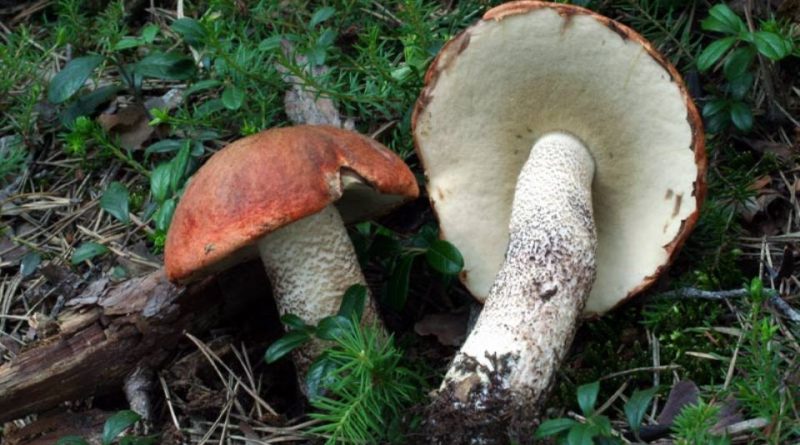Leccinum vulpinum
Leccinum vulpinum
Foxy bolete (Leccinum vulpinum Watling, 1961) is a symbiotic mushroom from the Boletaceae family.
Systematic –
From the systematic point of view it belongs to the Domain Eukaryota, Kingdom Fungi, Basidiomycota Division, Class Basidiomycetes, Order Boletales, Family Boletaceae and then to the genus Leccinum and to the species L. vulpinum.
The terms are synonyms: Boletus vulpinus (Watling) Hlaváček, Leccinum aurantiacum var. vulpinum (Watling) Pilát and Polyporus vulpinus (Link) Fr ..
Etymology –
The term Leccinum comes from (i) líceus, derived from ílex, -icis leccio: from the holm oak, related to the holm oak. The specific epithet of vulpinum is attributed to the color similar to that of the fox cape.
Geographic Distribution and Habitat –
The Leccinum vulpinum is a symbiotic mushroom that grows in coniferous or mixed woods, associated with Pinus and Picea and also Blueberry; grows lonely or in groups.
Recognition –
This Foxy bolete is recognized for having a hat of 7-9 cm in diameter, first hemispherical and after convex or plane-convex in maturity; the margin is involute, with fringes exceeding up to 6 mm, often absent in mature specimens. The cuticle is usually dark brown-reddish in color, with areas of a slightly lighter color, tomentosa or squamulose. The tubules are adnate or sinuated, ventricose, 10-16 mm long, pale grayish-brown, brown-pink, a little darker to the touch.
Pores are from white-gray to brownish in old age, rather small, roundish. The stem of 7-15 x 1.4 – 3.1 cm, cylindrical or subclavated, sometimes fusiform. It is decorated with dark grain, already at an early age, is of medium length, almost cylindrical, attenuated at the top and progressively widened towards the base with shades of greenish-black spots. These same greenish spots, are formed in the dent points. The meat is whitish, with a tendency to turn slowly towards pink / orange – dark purple, especially in the stem, with a slightly fungal smell and taste.
Under the microscope, spores of 11-15.5 x 3.6-4.7 μm, spindle-shaped, of a pale-purplish-brown color in mass, with a conical apex and an evident suprailary depression are noted. The basidia are 20.5-26.5 x 7.5-10.5 μm, clavates, lageniforms, hyaline; the pleurocystidae are often clavate or slightly utriform with a reddish-brown content. The caulocystides measure 20.5 – 42.5 x 9.5 – 16.0 μm, generally clavate, with obtuse or acuminate apex, with a usually brownish content in KOH.
Cultivation –
The Foxy bolete is not a cultivated mushroom.
Uses and Traditions –
The Leccinum vulpinum is one of the red Leccini defined by good edible, for some to insignificant for others, like the other boletes has a meat that blacks at cooking.
Preparation Mode –
As with other edible leccins, once harvested, you can consume the meat of the cap while it is recommended to discard the stalk that is fibrous and scaly. It can be stored in oil, dried or cooked as for other leccini or edible bolete.
Guido Bissanti
Sources
– Wikipedia, the free encyclopedia.
– Cetto B., 2008. Real mushrooms, Saturnia, Trento.
– Pignatti S., 1982. Flora d’Italia, Edagricole, Bologna.
– Conti F., Abbate G., Alessandrini A., Blasi C. (edited by), 2005. An annotated checklist of the Italian vascular flora, Palombi Editore.
Warning: Pharmaceutical applications and alimurgical uses are indicated for informational purposes only and do not in any way represent a medical prescription; there is therefore no liability for their use for curative, aesthetic or food purposes.


